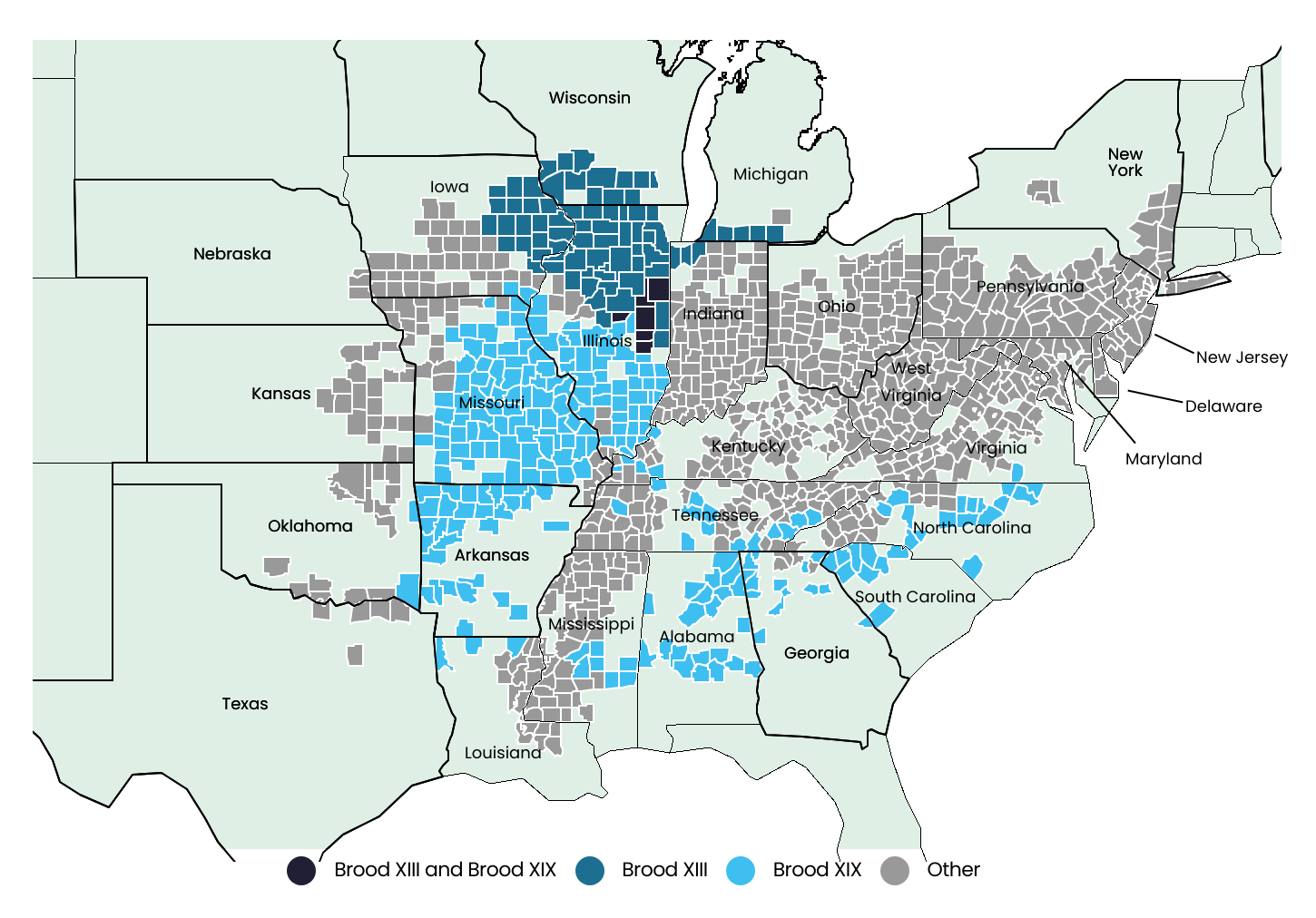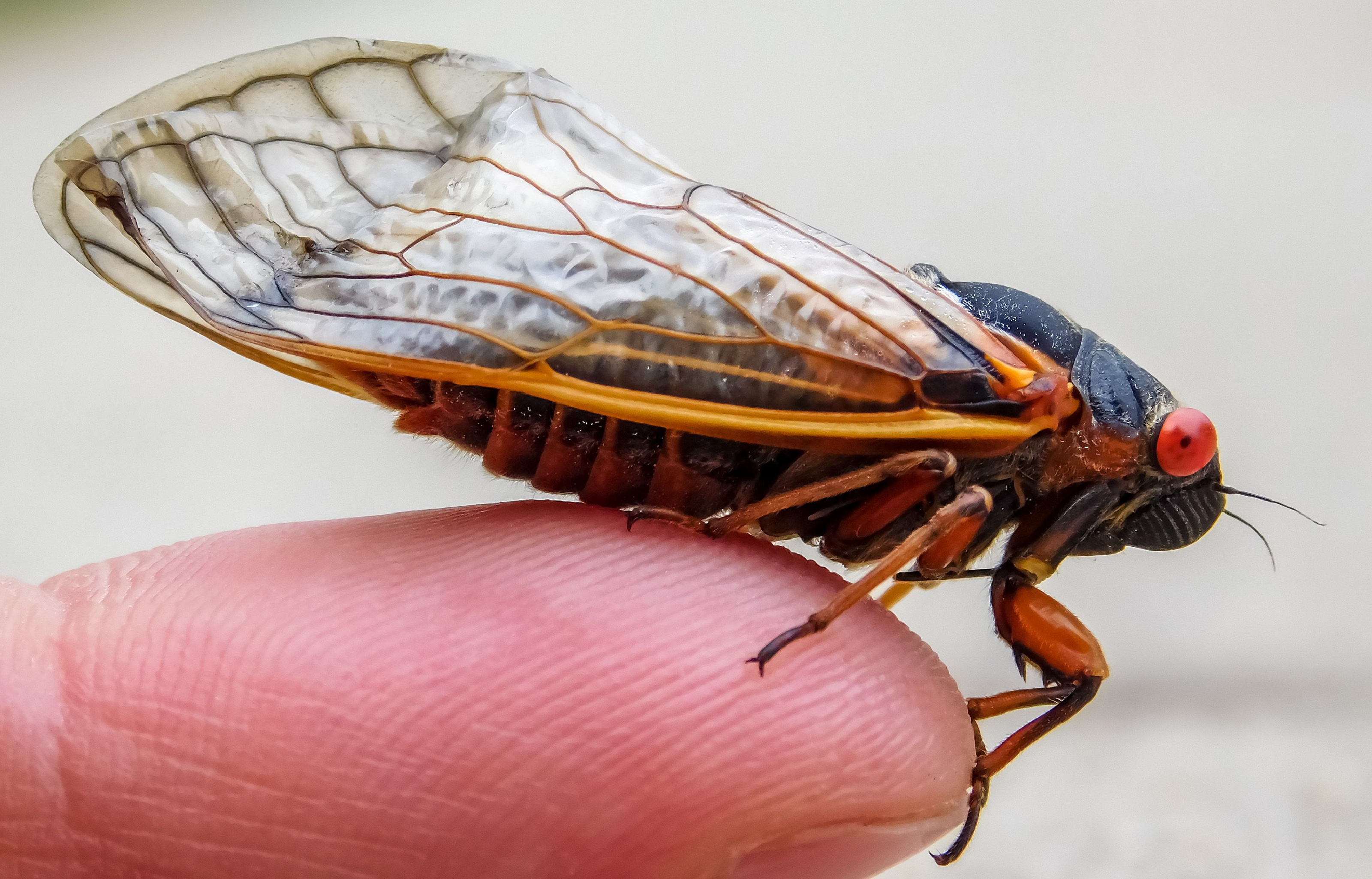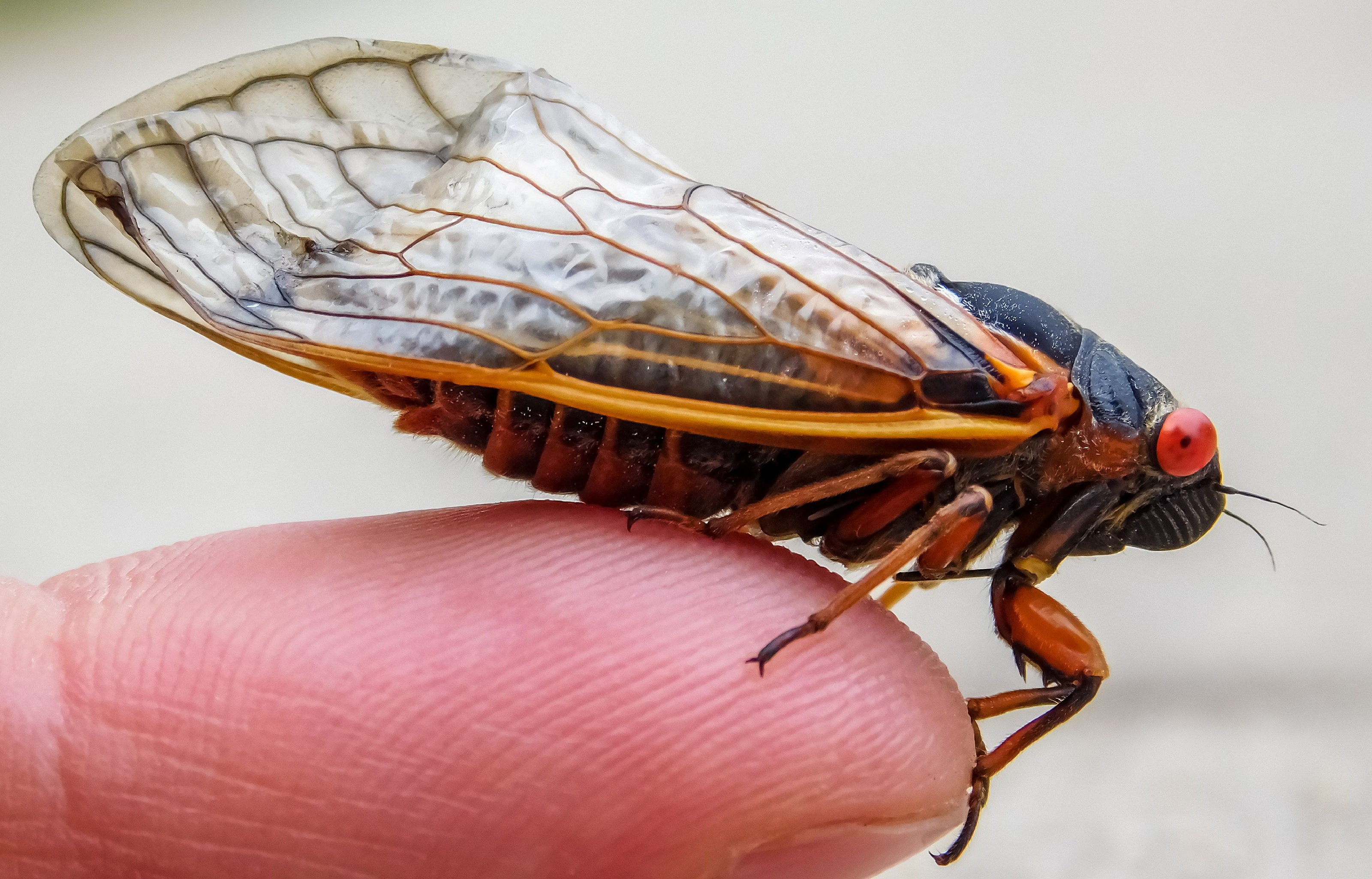With temperatures heating back up, the typical sights, smells, and sounds of spring are returning once again. But this year, one familiar sound—the buzz of cicadas—may be more prominent than usual.
This year marks a rare convergence as two significant cicada broods—the 13-year Brood XIX and the 17-year Brood XIII—emerge simultaneously, an event occurring only once every 221 years. These broods are examples of periodical cicadas, which synchronize their development and emerge in unison every 13 or 17 years, contrasting with annual cicadas that emerge yearly. And given the scope of this year’s periodical broods—Brood XIX is the largest by geographic reach and Brood XIII is the largest in size—2024 will bring a once-in-a-lifetime level of cicada activity to the U.S.
Despite the anticipation surrounding this event, there’s little cause for concern. Cicadas are benign creatures, posing minimal threat as they neither bite nor sting, and they largely abstain from consuming garden plants or crops. On the contrary, cicadas provide a host of ecological benefits by aerating soil and serving as a crucial food source for various animals. As Captain Jason Jeffrey, a local Tennessee fishing guide, aptly describes, “it’s about 3–4 weeks of non-stop action [and] an eruption of calories from nature. Everything gets fat on these high-calorie protein snacks. Squirrels and cats will battle for their share of the loot, [while] birds will eat a once-in-a-lifetime feast that can make an entire species thrive and pass genes.”
Interestingly, cicada hatches also create a boon for fishing enthusiasts. The large number of cicadas that emerge during hatches provide excellent feeding opportunities for fish, attracting them in large numbers to the water’s surface. This abundance of prey leads to exceptional fishing, with anglers often enjoying heightened catch rates and larger fish sizes during cicada hatches. “When these bugs land on the water, all of the fish eat them. It’s the best fly fishing in freshwater. Period,” says Captain Jason. “It transforms a seemingly normal fishery to something magic. I’ve got patterns ready and hooks sharpened, all I need is anglers to haul these fish in.”
How Loud Are Cicadas?
The noise level achieved by cicadas exchanging mating calls is comparable to a lawnmower

Source: Captain Experiences analysis of NIH data
Of course, one of the most widely recognized cicada characteristics is their sound. Male cicadas use membranes in their abdomen known as tymbals to generate distinct mating calls for females, and other features of cicadas’ anatomy serve to amplify the sound. As a result, cicadas can produce their mating calls at a noise level of 90 dBA. This volume is greater than that produced by hair dryers, comparable to that of lawnmowers, and on par with what’s considered damaging to human hearing given long periods of exposure.
Where Are Cicadas Located?
While annual cicadas are widespread throughout the Lower 48, periodical cicadas are concentrated among eastern states

Source: Captain Experiences analysis of U.S. Forest Service data
Not every part of the country experiences the impacts of cicadas equally. Annual cicadas are widespread throughout the continental U.S., but periodical cicadas are concentrated only in certain regions of the country. The Northeast, Midwest, and especially Southeast tend to have a higher concentration of cicadas because of how the periodical broods and annual broods intersect. In contrast, the western U.S., New England, and Florida only encounter annual cicadas.
Where Will the 2024 Double Brood Occur?
A total of 17 states and 321 counties are expected to experience either Brood XIII or Brood XIX

Source: Captain Experiences analysis of U.S. Forest Service data
And though the co-emergence of Brood XIII and XIX will increase the overall activity of cicadas in the U.S. this year, few locations will be impacted by both broods simultaneously. Experts anticipate that most of the counties that will be exposed to Brood XIII are found in Illinois, Iowa, and Wisconsin, while Missouri, Illinois, Arkansas, and several other southeastern states will see the greatest impacts of Brood XIX’s emergence. Only six counties nationwide—all within the state of Illinois—will see both broods emerge.
Below is a complete breakdown of all states affected by the 2024 cicada double brood. The analysis was conducted by Captain Experiences using data from the U.S. Forest Service. For more information, see the methodology section below.
Methodology

Photo Credit: SB Shots / Shutterstock
The data used in this study is from the U.S. Forest Service Geodata Clearinghouse. To determine the states that will be most impacted by the 2024 cicada double brood, researchers calculated the percentage of counties in which either Brood XIII or Brood XIX is expected to emerge. Researchers also calculated percentages and totals for the individual broods and their overlap, where applicable.
For complete results, see Mapping the 2024 Cicada Double Brood: Which States Will Feel the Buzz? on Captain Experiences.
